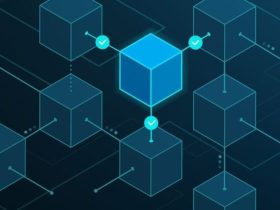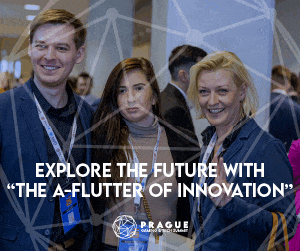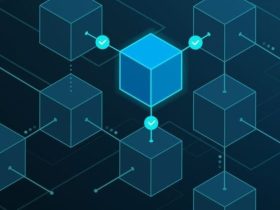In 2025, cybersecurity sits at the crossroads of automation, collaboration, and innovation. Legacy vendors and startups alike are investing heavily—both financial and strategic partnerships—to tackle an explosion of threats catalyzed by generative AI. Governments are piloting internal LLM chatbots, the Big Four are packaging AI frameworks, and specialized firms are delivering enterprise‑grade AI servers. Against this backdrop:
-
Partnerships (public‑private, academia–industry, interoperability consortia) are surging as organizations seek shared playbooks for resilience.
-
Funding for AI‑driven security is rising, evidenced by consulting giants publishing blueprints and cyber‑intelligence startups launching flagship products.
-
Emerging Threats, powered by weaponized AI and increasingly sophisticated adversaries, demand automated defenses, real‑time threat hunting, and novel governance frameworks.
This briefing decodes today’s top stories—offering an opinionated lens on why these moves matter, how they interlink, and what lies ahead for CISOs, security architects, and policy‑makers.
1. CyCraft’s CEO Alerts to AI‑Driven Cyber Threats
Story: In a recent analysis from Digitimes, Benson Wu—CEO and co‑founder of CyCraft Technology—warns that generative AI tools enable cybercriminals to orchestrate more sophisticated, large‑scale attacks, from customized phishing to automated ransomware deployment. Wu calls for a new era of automated defenses that can match AI‑driven offense in speed and adaptability.
Source: Digitimes
Analysis & Opinion:
-
AI‑Armed Adversaries: Generative models can craft highly convincing social‑engineering lures, bypass legacy filters, and accelerate vulnerability discovery. As Wu highlights, human‑in‑the‑loop detection struggles to keep pace.
-
Automated Countermeasures: Security operations must embrace real‑time, AI‑driven detection and response—from behavioral anomaly detection to autonomous incident triage. Partnership opportunities abound between vendors of XDR platforms, SIEM systems, and AI model providers to build integrated defense layers.
-
Broader Implications: Vendors and enterprises face a race condition: deploy advanced AI defenses or risk obsolescence. Organizations should allocate R&D funding toward building or integrating AI‑powered SOC tools, and consider strategic alliances with niche AI security startups.
2. NIST’s Internal AI Chatbot Seeks Public Guidance
Story: The National Institute of Standards and Technology (NIST) has published a draft report on an internal, retrieval‑augmented generation (RAG) chatbot—powered by Meta’s LLaMA 3.1—designed to help its NCCoE staff search and synthesize cybersecurity guidance more efficiently. Public comments are invited through August 4, 2025.
Source: HS Today
Analysis & Opinion:
-
Governance‑First AI: NIST’s approach—local deployment, open‑source foundation, and strict privacy safeguards—serves as a blueprint for federated or on‑premises LLMs in high‑security environments.
-
Public‑Private Dynamics: By soliciting feedback, NIST fosters collaboration between regulators, vendors, and practitioners. Companies developing their own internal AI assistants can follow suit: publish pilot studies, engage stakeholder input, and refine governance controls.
-
Implications: Expect a wave of AI governance frameworks—from corporate AI ethics councils to cross‑industry consortia—defining best practices for secure LLM usage in cyber operations and compliance teams.
3. Embry‑Riddle & FAA Partnership: AI/Data Science for Aviation Security
Story: Embry‑Riddle Aeronautical University’s Center for Aerospace Resilient Systems (CARS) has extended its contract with the FAA’s Cyber Security Data Science (CSDS) unit. Together, they will develop AI/ML models—trained on simulated aircraft‑system data—to detect sophisticated aviation cyberattacks, from ADS‑B spoofing to network intrusions.
Source: NBAA
Analysis & Opinion:
-
Sector‑Specific Threat Intelligence: Aviation’s transition to digital systems (GNSS, ADS‑B, in‑flight Wi‑Fi) creates unique attack surfaces. The FAA–Embry‑Riddle partnership exemplifies how academia–government alliances can co‑fund research and standardize emerging protocols.
-
Standards & Funding: Backed by federal grants and industry sponsorships, this initiative showcases the importance of targeted R&D funding. Other sectors (maritime, rail, healthcare) should pursue similar consortium‑based research models.
-
Strategic Takeaway: CISOs in regulated industries must not only deploy AI‑driven anomaly detection but also engage in multi‑stakeholder standards bodies (e.g., RTCA, ARINC) to shape domain‑specific cybersecurity guidelines.
4. SOCRadar Launches MCP Server for AI‑Powered Threat Intelligence
Story: SOCRadar has introduced its MCP Server—an enterprise‑grade, Kubernetes‑native platform implementing the emerging Model Context Protocol. It transforms any AI assistant into a fully capable cybersecurity analyst, granting real‑time access to over 35 specialized threat‑intelligence tools.
Source: SOCRadar
Analysis & Opinion:
-
Interoperability & Automation: The MCP Server bridges LLMs with threat‑intelligence platforms, enabling natural‑language orchestration of incident response, vulnerability management, and ransomware monitoring. This aligns with Gartner’s forecast for AI‑augmented security operations.
-
Partnership Potential: Integration-ready design invites collaboration with SOAR vendors, EDR providers, and cloud‑service platforms to build out automated playbooks. Investment interest from venture and strategic backers is likely, as the product addresses a clear market demand for unified AI security consoles.
-
Industry Implications: Organizations evaluating AI-driven platforms should assess MCP‑compatible offerings, lobby for open protocols, and budget for pilot deployments to validate ROI in threat‑detection speed and analyst productivity.
5. Deloitte Unveils AI Blueprints to Reshape Corporate Cybersecurity
Story: Deloitte US has released a suite of AI adoption blueprints and accompanying technology services aimed at helping Fortune 2,000 companies integrate generative AI into their sprawling cybersecurity toolsets. The firm warns that without a clear framework, layering AI atop 50–60 existing security tools risks operational chaos.
Source: Bloomberg Tax
Analysis & Opinion:
-
Consulting‑Led Innovation: The Big Four’s foray into AI‑driven cybersecurity underscores the commercial opportunity: selling governance frameworks, risk‑assessment toolkits, and managed‑services contracts. Clients should anticipate premium consulting fees but also expect knowledge transfer and rapid upskilling.
-
Tool Rationalization: Deloitte’s blueprints likely advocate for tool consolidation, data‑pipeline normalization, and API‑first architectures—enabling generative models to ingest and act upon comprehensive telemetry. This phase will require dedicated funding and cross‑functional governance committees within organizations.
-
Strategic Implications: To avoid “AI sprawl,” enterprises must adopt phased roadmaps: pilot one use case (e.g., alert triage), measure impact on MTTD/MTTR, then scale with Deloitte’s or other consultancies’ guidance—negotiating success metrics into contracts.
Conclusion: Charting the Cybersecurity Frontier
Today’s developments illustrate a cybersecurity ecosystem in flux—driven by AI‑enabled threats, strategic partnerships, and significant funding commitments. Key takeaways:
-
Automate to Outpace: As CyCraft warns, AI‑powered offenses demand AI‑augmented defenses.
-
Governance as Growth Catalyst: NIST’s public‑comment model and Deloitte’s frameworks underscore that robust governance structures unlock secure AI adoption.
-
Domain‑Specific Alliances: Aviation’s FAA–Embry‑Riddle partnership serves as a blueprint for other regulated sectors.
-
Open Protocols Win: SOCRadar’s MCP Server adoption of the Model Context Protocol highlights the importance of interoperability in scaling AI operations.
-
Invest Wisely: Funding blueprints and research grants must align with measurable security outcomes—be it reduced dwell time, streamlined incident response, or standardized data‑sharing agreements.
For CISOs, security architects, and policy‑makers, the mandate is clear: collaborate, standardize, and automate. Those who build cross‑industry coalitions, invest in domain‑tailored AI research, and deploy interoperable platforms will define the next chapter in cybersecurity resilience.















Got a Questions?
Find us on Socials or Contact us and we’ll get back to you as soon as possible.